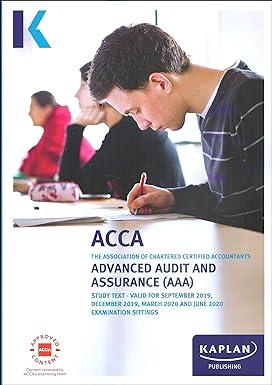Auditing 3A
Question 1

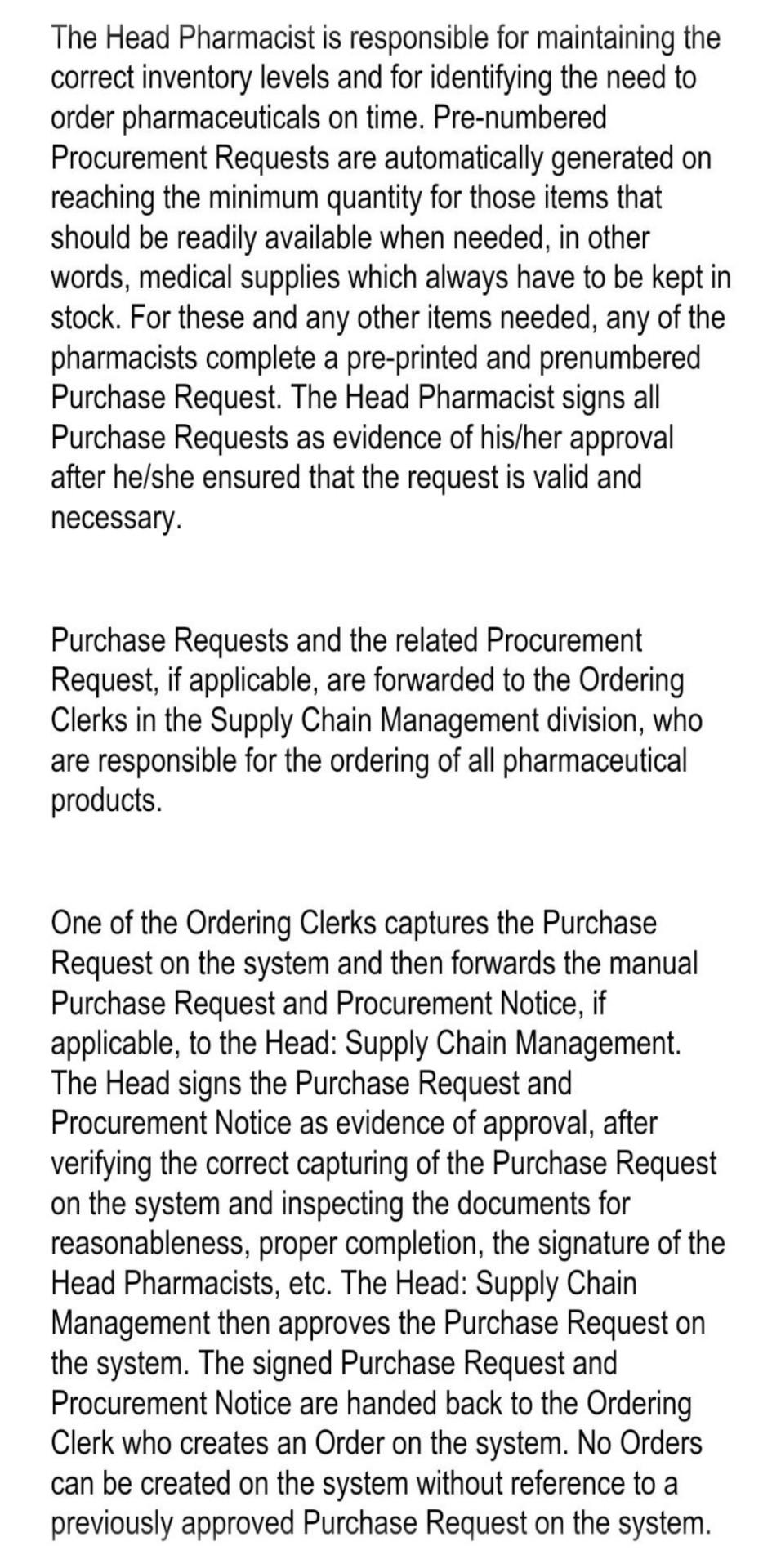
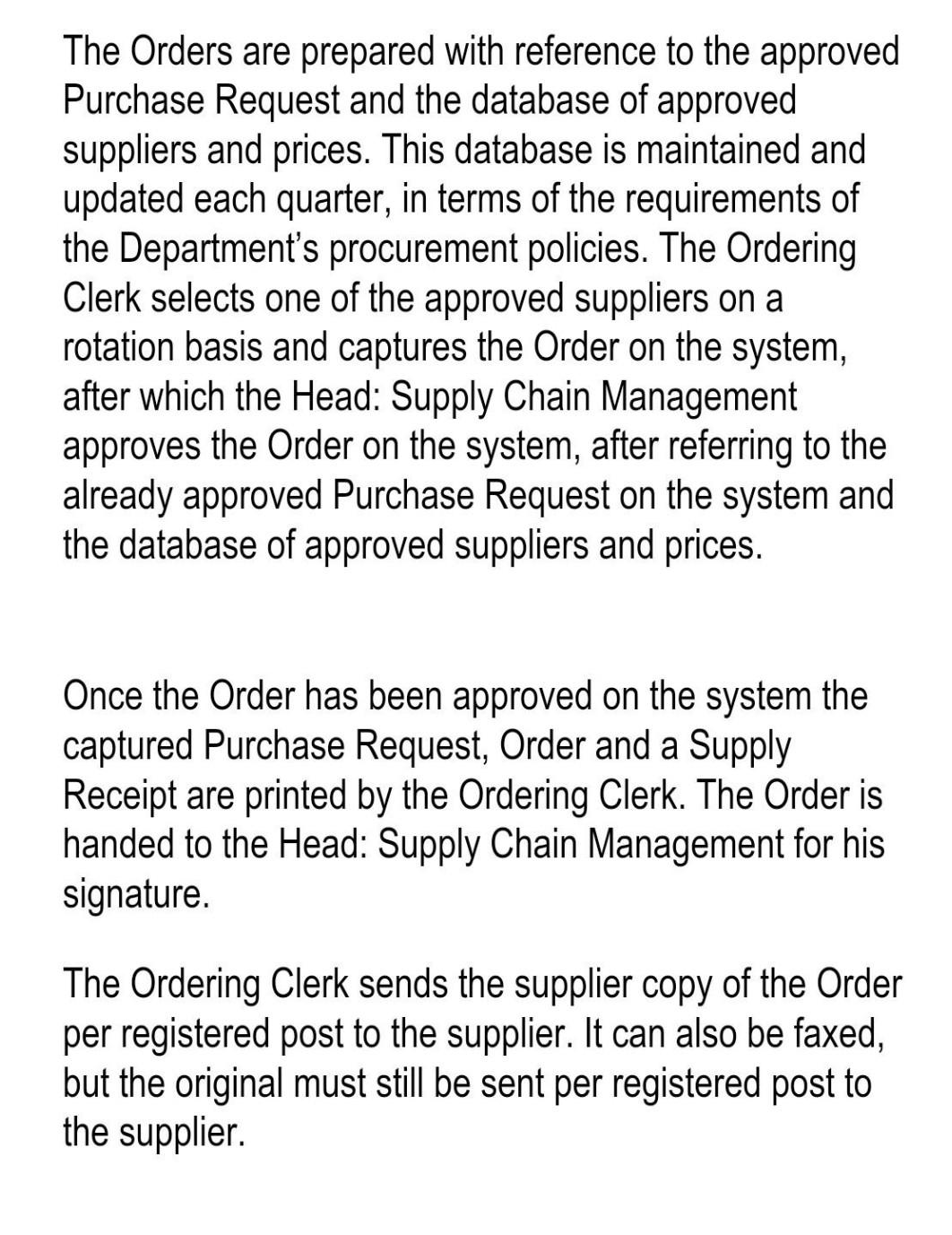
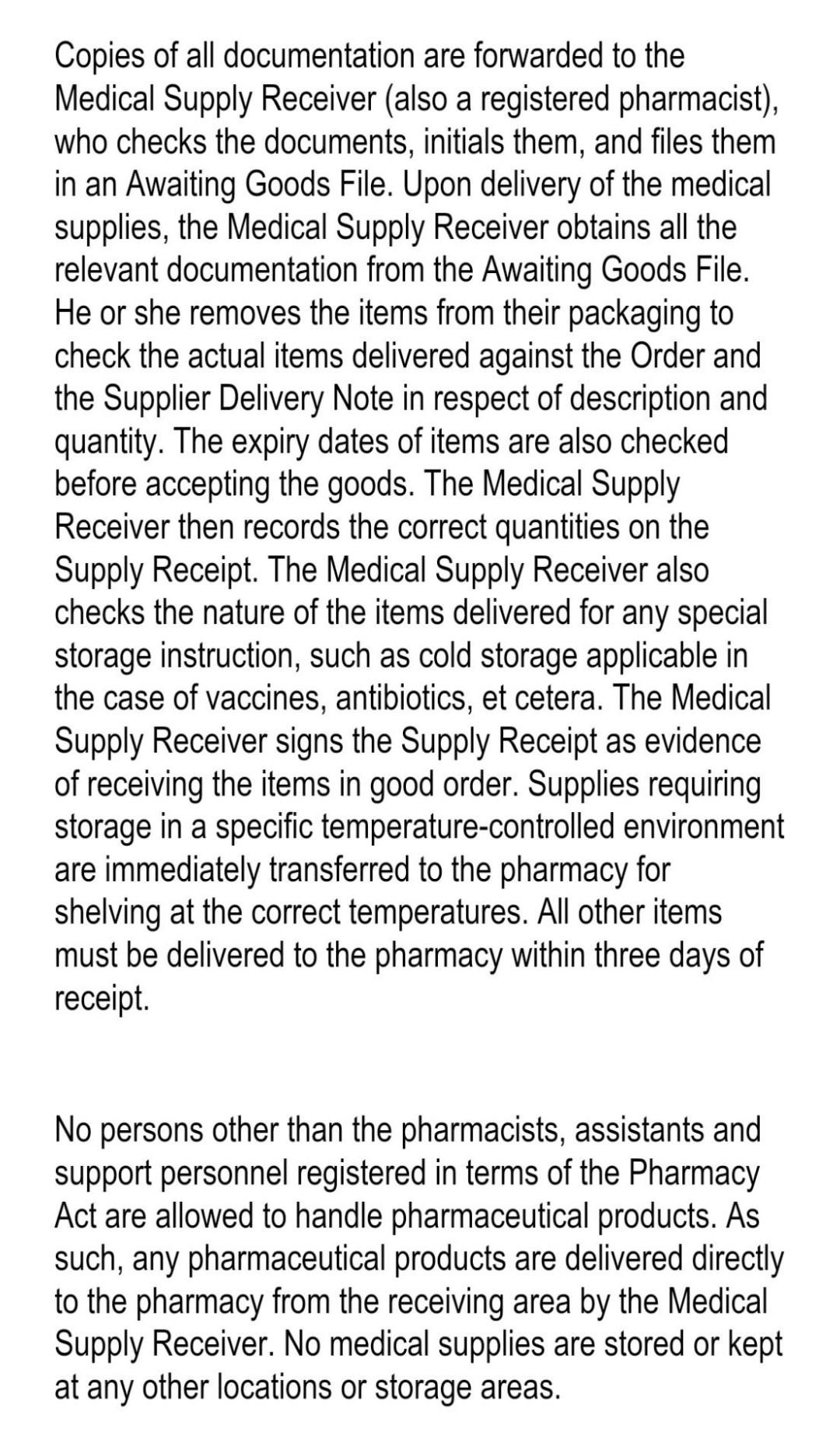
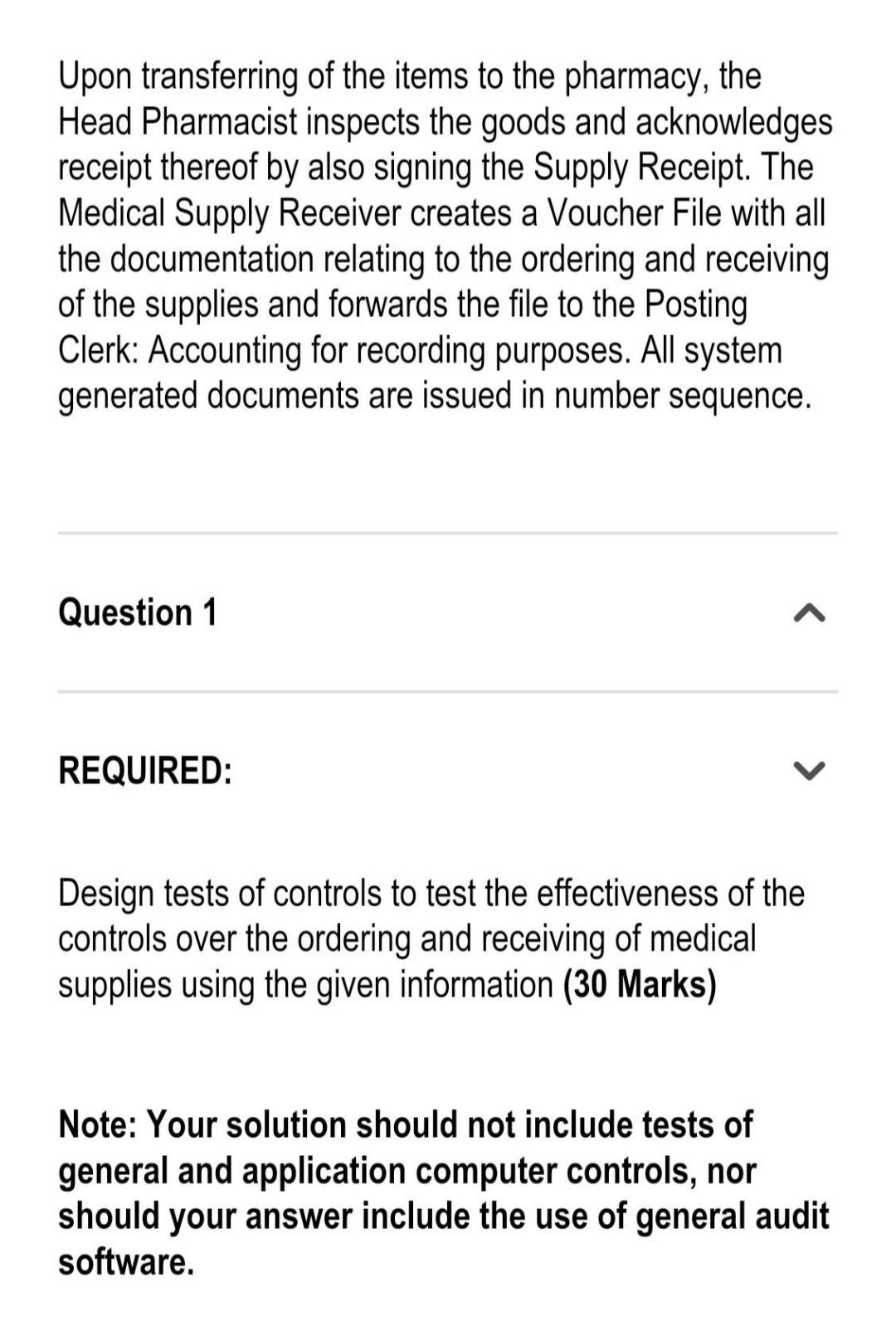
The following represents an extract from the system description of an entity The health department of South Africa is responsible to provide proper medical care to all people. This duty includes the provision of proper hospital/clinic care, surgical procedures required, external equipment such as hearing aids and medication, including prescription medicines, antiretroviral drugs, vaccines, et cetera. All the hospitals have on-site access to the services of a full-time registered pharmacist. All medication is kept in the pharmacies for issue to I clinics or hospitals and for dispensing purposes. The Head Pharmacist is responsible for the administration of medicine and must ensure that the hospitals and clinics adheres to laws and regulations regarding the control of medical supplies. All persons employed in the pharmacy that provides services which form part of the scope of functions of a pharmacist, must be registered with the South African Pharmacy Board and must possess a valid membership number and membership certificate. All access to medical supplies is strictly obtained through one of the registered pharmacists. There is only one entrance to the pharmacy which is secured by means of a security gate and an alarm system. The door and security gate are kept always locked and only authorised personnel may enter or exit the pharmacy. The Head Pharmacist is responsible for maintaining the correct inventory levels and for identifying the need to order pharmaceuticals on time. Pre-numbered Procurement Requests are automatically generated on reaching the minimum quantity for those items that should be readily available when needed, in other words, medical supplies which always have to be kept in stock. For these and any other items needed, any of the pharmacists complete a pre-printed and prenumbered Purchase Request. The Head Pharmacist signs all Purchase Requests as evidence of his/her approval after he/she ensured that the request is valid and necessary. Purchase Requests and the related Procurement Request, if applicable, are forwarded to the Ordering Clerks in the Supply Chain Management division, who are responsible for the ordering of all pharmaceutical products. One of the Ordering Clerks captures the Purchase Request on the system and then forwards the manual Purchase Request and Procurement Notice, if applicable, to the Head: Supply Chain Management. The Head signs the Purchase Request and Procurement Notice as evidence of approval, after verifying the correct capturing of the Purchase Request on the system and inspecting the documents for reasonableness, proper completion, the signature of the Head Pharmacists, etc. The Head: Supply Chain Management then approves the Purchase Request on the system. The signed Purchase Request and Procurement Notice are handed back to the Ordering Clerk who creates an Order on the system. No Orders can be created on the system without reference to a previously approved Purchase Request on the system. The Orders are prepared with reference to the approved Purchase Request and the database of approved suppliers and prices. This database is maintained and updated each quarter, in terms of the requirements of the Department's procurement policies. The Ordering Clerk selects one of the approved suppliers on a rotation basis and captures the Order on the system, after which the Head: Supply Chain Management approves the Order on the system, after referring to the already approved Purchase Request on the system and the database of approved suppliers and prices. Once the Order has been approved on the system the captured Purchase Request, Order and a Supply Receipt are printed by the Ordering Clerk. The Order is handed to the Head: Supply Chain Management for his signature. The Ordering Clerk sends the supplier copy of the Order per registered post to the supplier. It can also be faxed, but the original must still be sent per registered post to the supplier. Copies of all documentation are forwarded to the Medical Supply Receiver (also a registered pharmacist), who checks the documents, initials them, and files them in an Awaiting Goods File. Upon delivery of the medical supplies, the Medical Supply Receiver obtains all the relevant documentation from the Awaiting Goods File. He or she removes the items from their packaging to check the actual items delivered against the Order and the Supplier Delivery Note in respect of description and quantity. The expiry dates of items are also checked before accepting the goods. The Medical Supply Receiver then records the correct quantities on the Supply Receipt. The Medical Supply Receiver also checks the nature of the items delivered for any special storage instruction, such as cold storage applicable in the case of vaccines, antibiotics, et cetera. The Medical Supply Receiver signs the Supply Receipt as evidence of receiving the items in good order. Supplies requiring storage in a specific temperature-controlled environment are immediately transferred to the pharmacy for shelving at the correct temperatures. All other items must be delivered to the pharmacy within three days of receipt. No persons other than the pharmacists, assistants and support personnel registered in terms of the Pharmacy Act are allowed to handle pharmaceutical products. As such, any pharmaceutical products are delivered directly to the pharmacy from the receiving area by the Medical Supply Receiver. No medical supplies are stored or kept at any other locations or storage areas. Upon transferring of the items to the pharmacy, the Head Pharmacist inspects the goods and acknowledges receipt thereof by also signing the Supply Receipt. The Medical Supply Receiver creates a Voucher File with all the documentation relating to the ordering and receiving of the supplies and forwards the file to the Posting Clerk: Accounting for recording purposes. All system generated documents are issued in number sequence. Question 1 REQUIRED: Design tests of controls to test the effectiveness of the controls over the ordering and receiving of medical supplies using the given information (30 Marks) Note: Your solution should not include tests of general and application computer controls, nor should your answer include the use of general audit software











